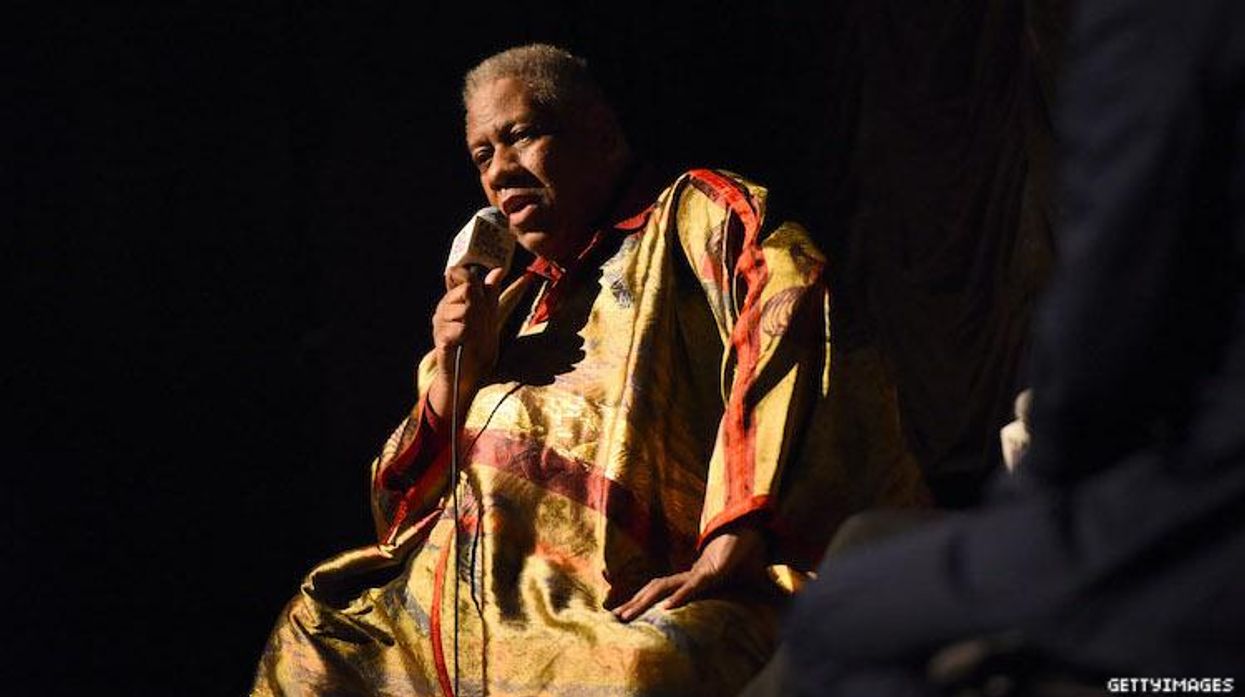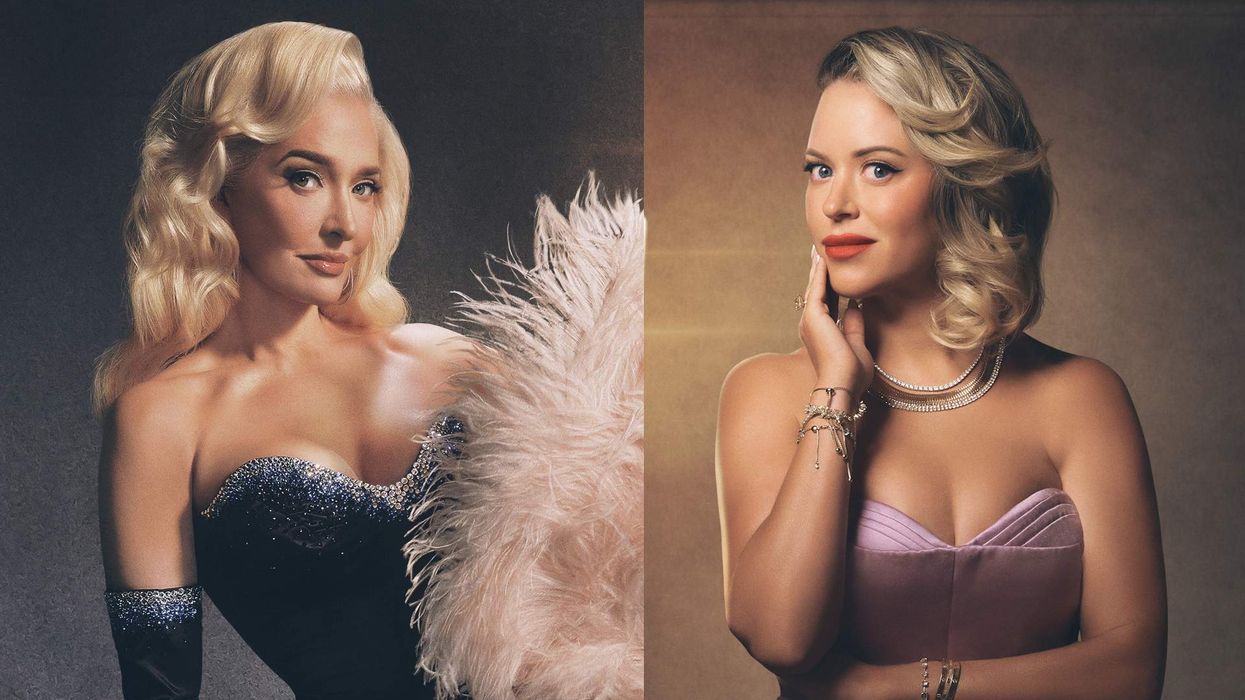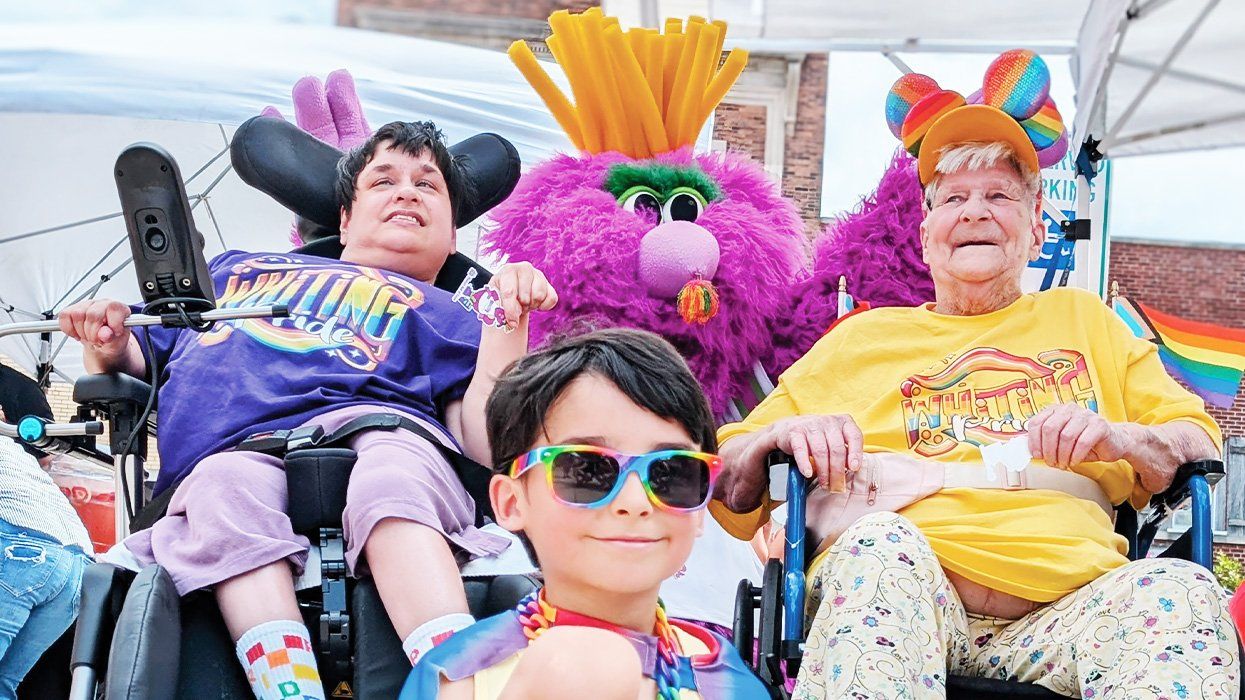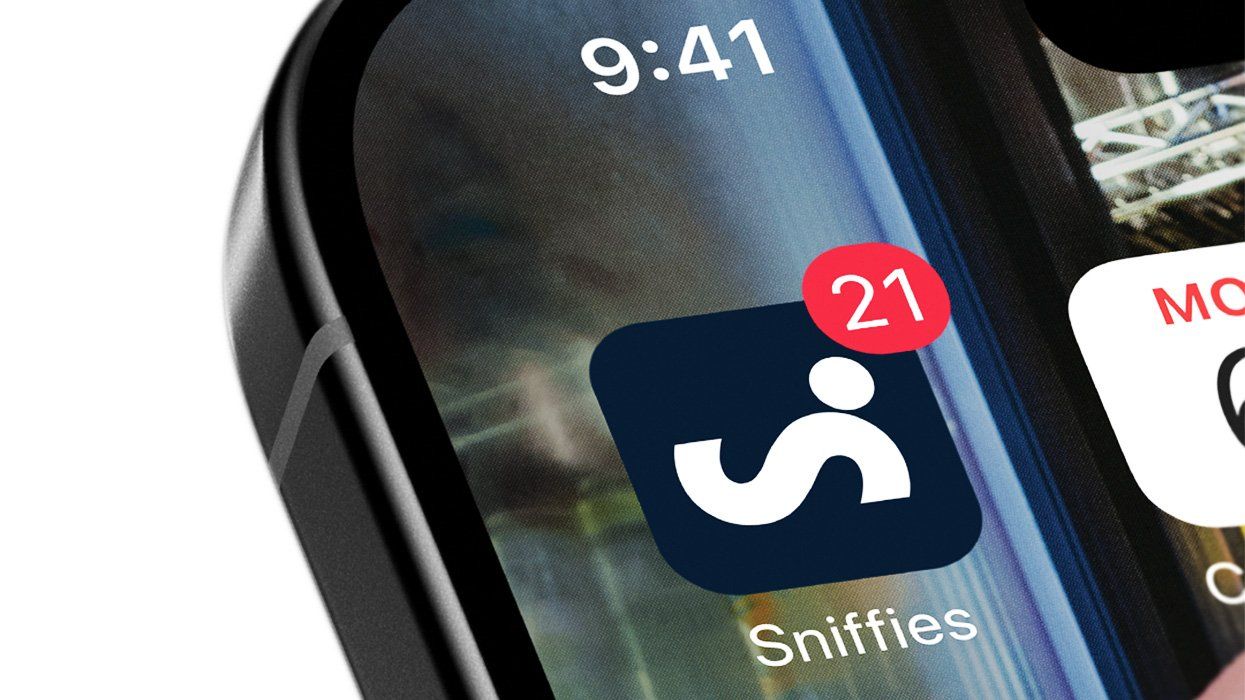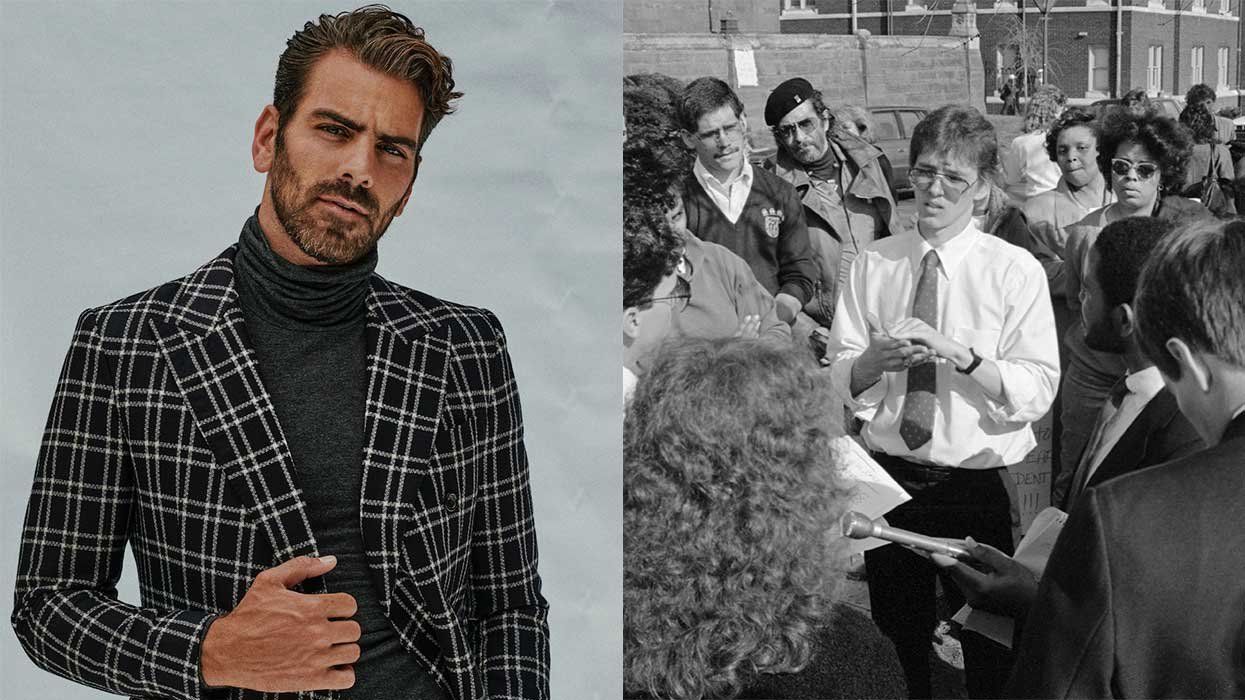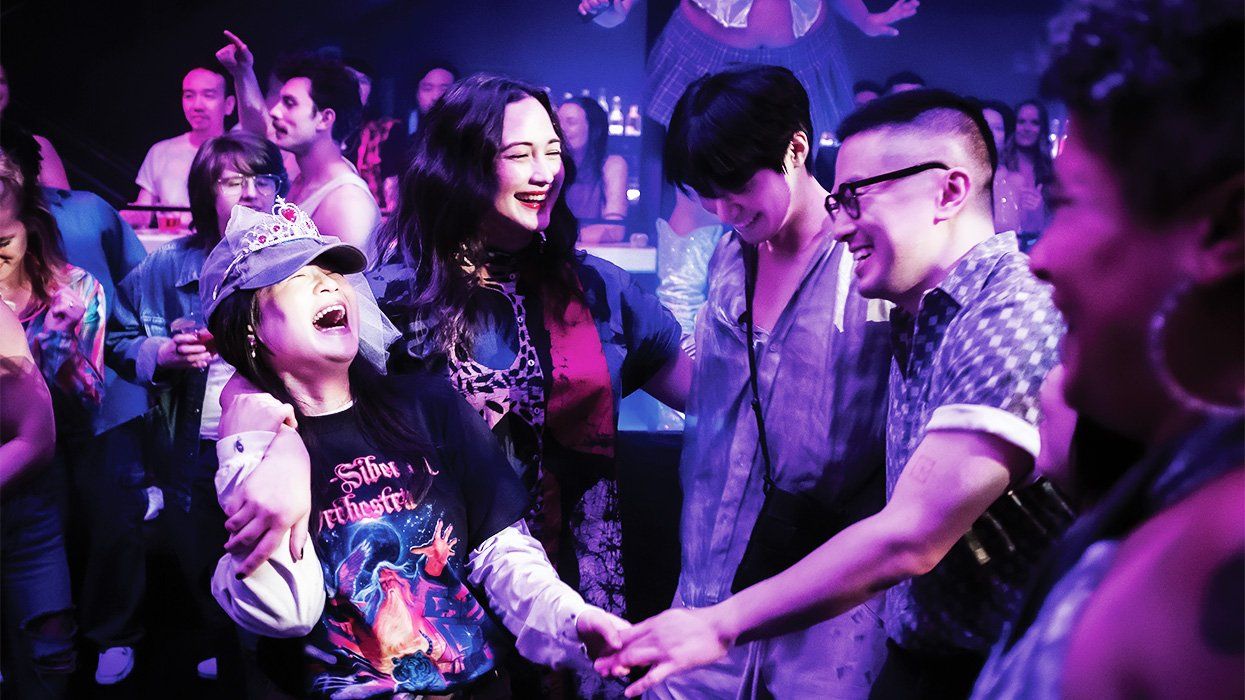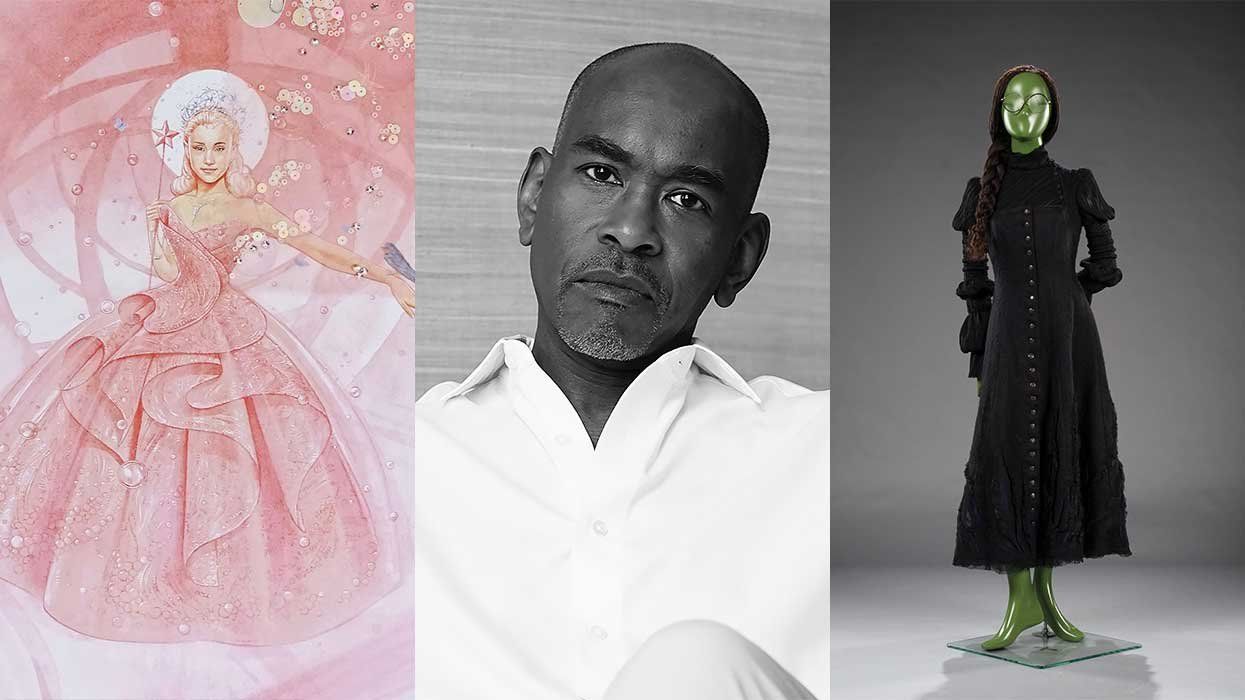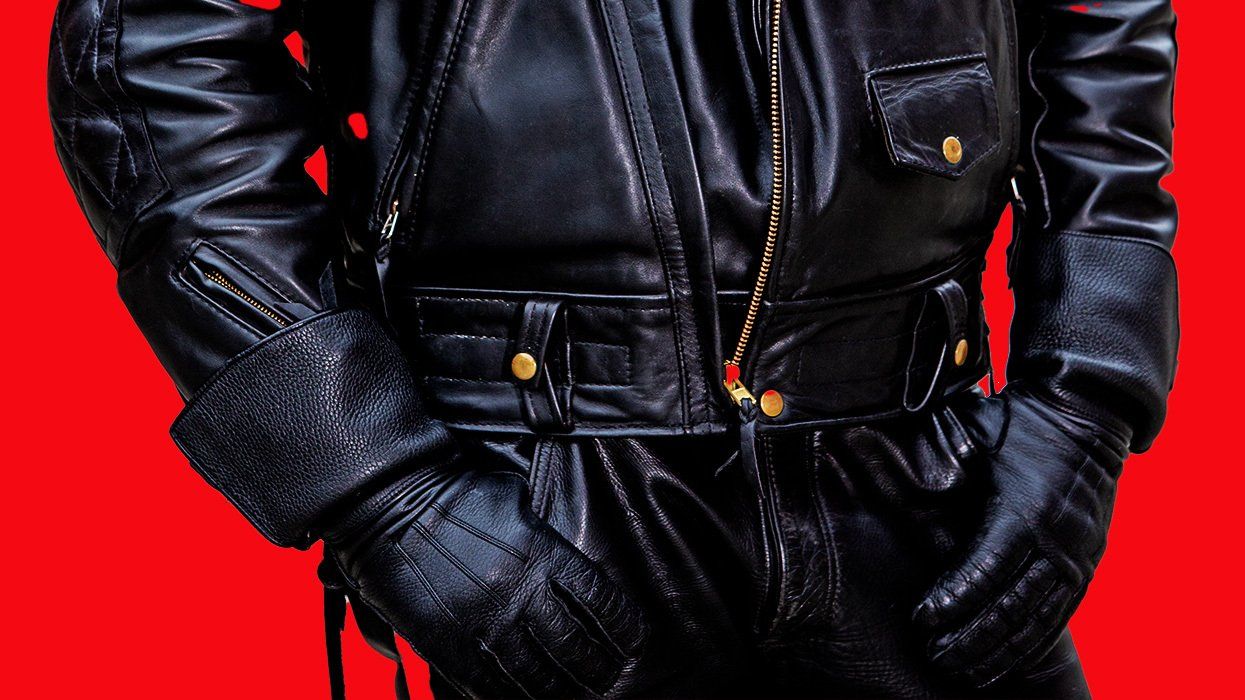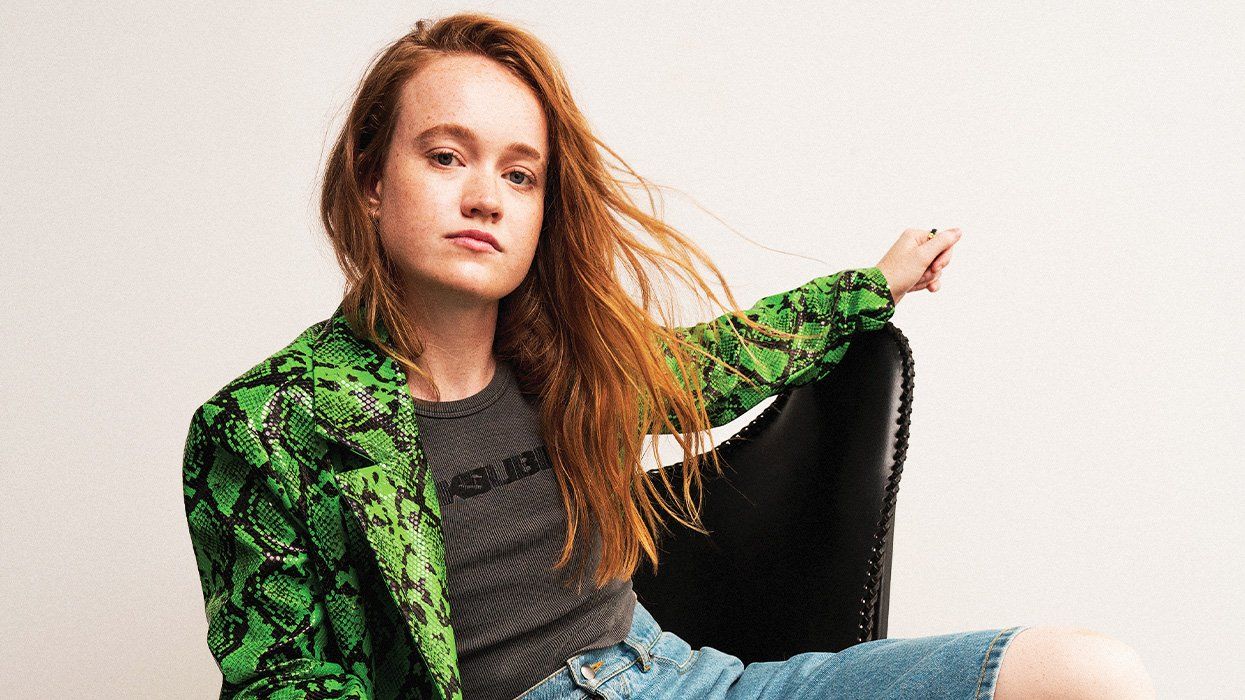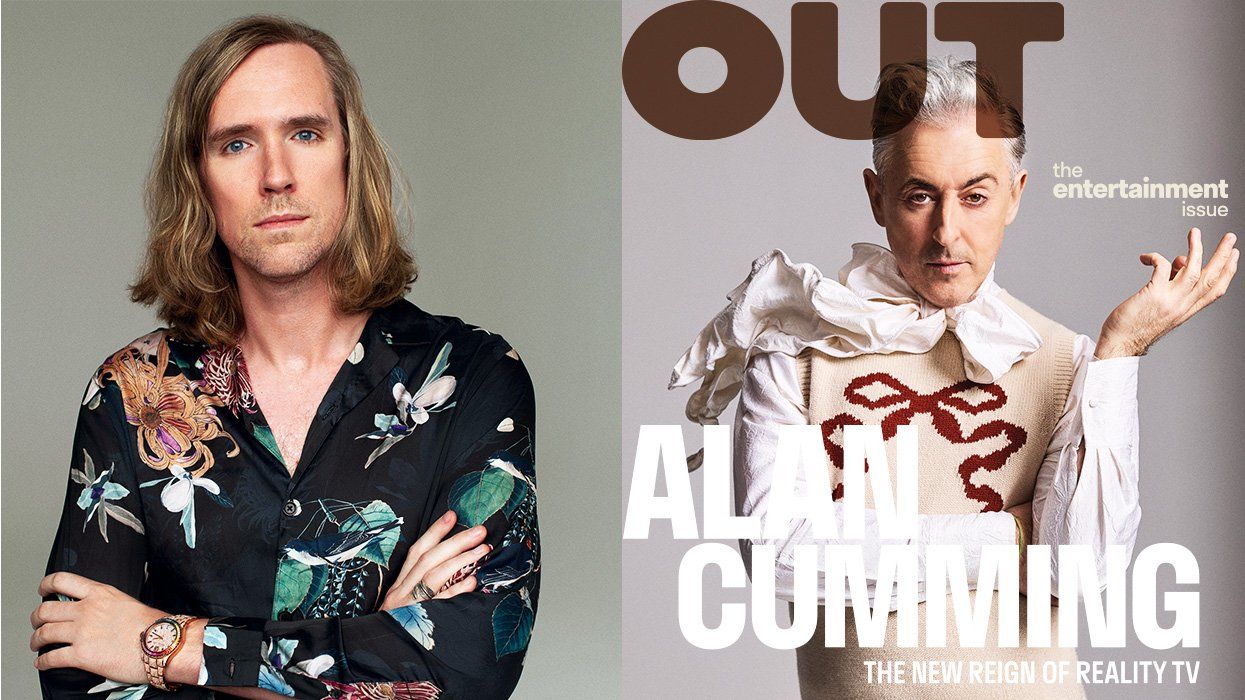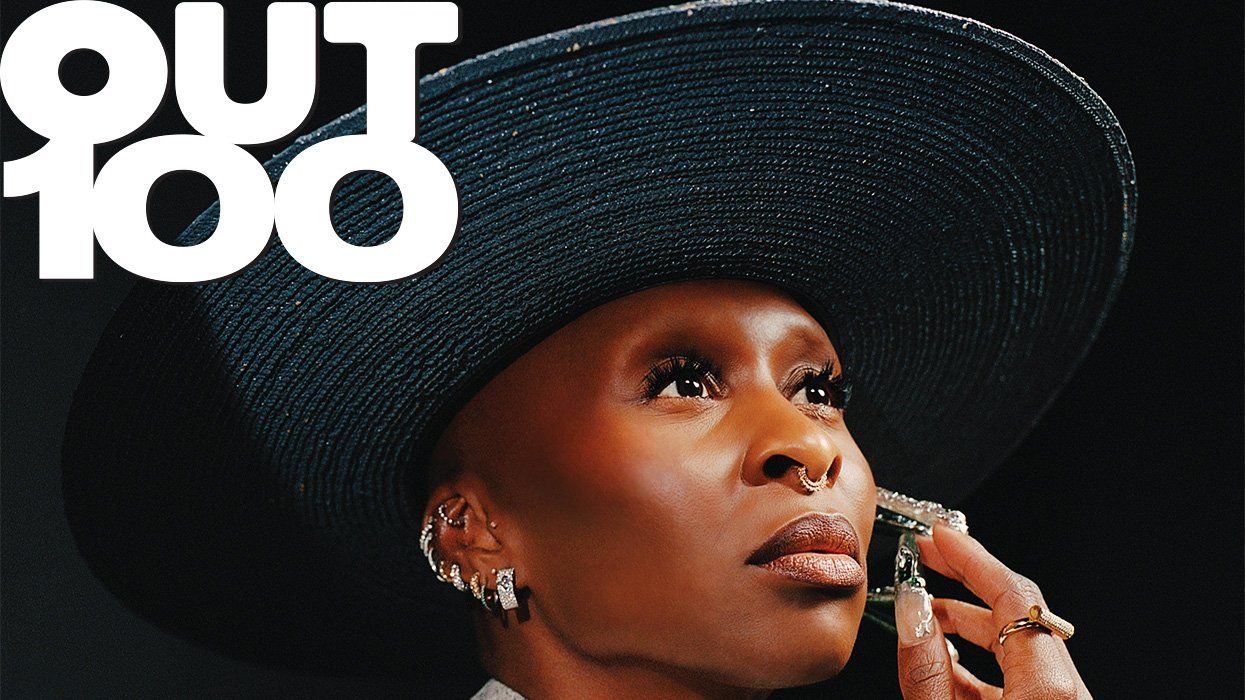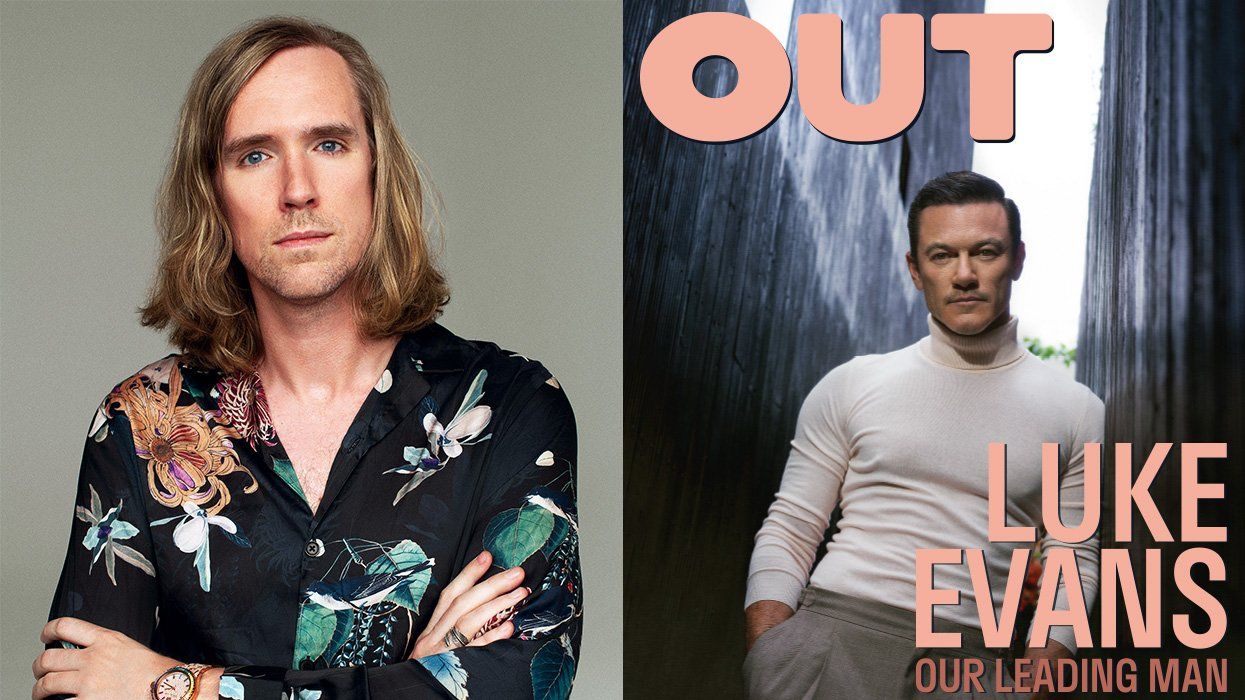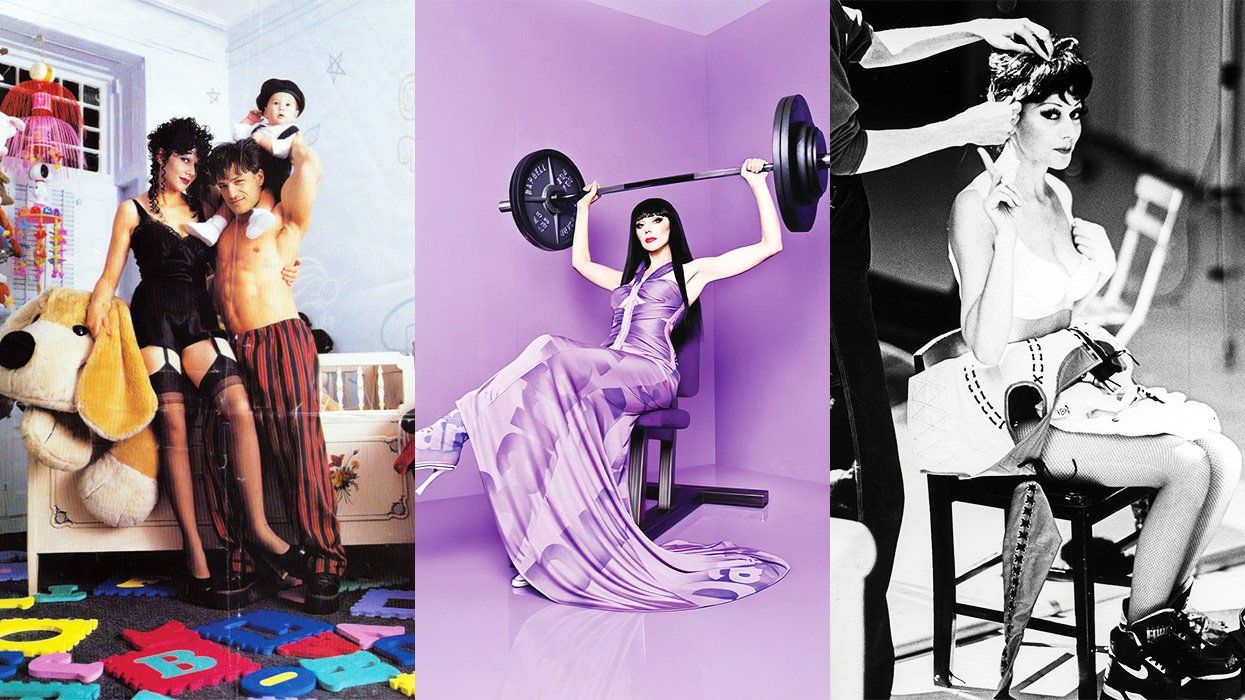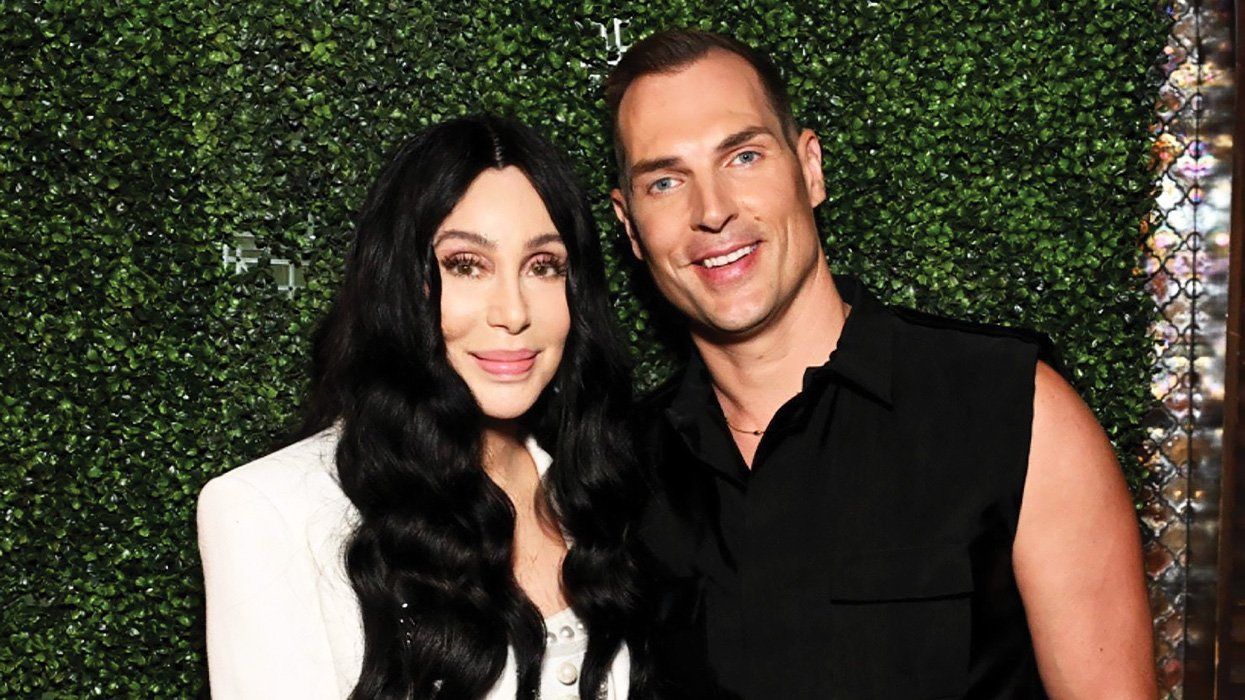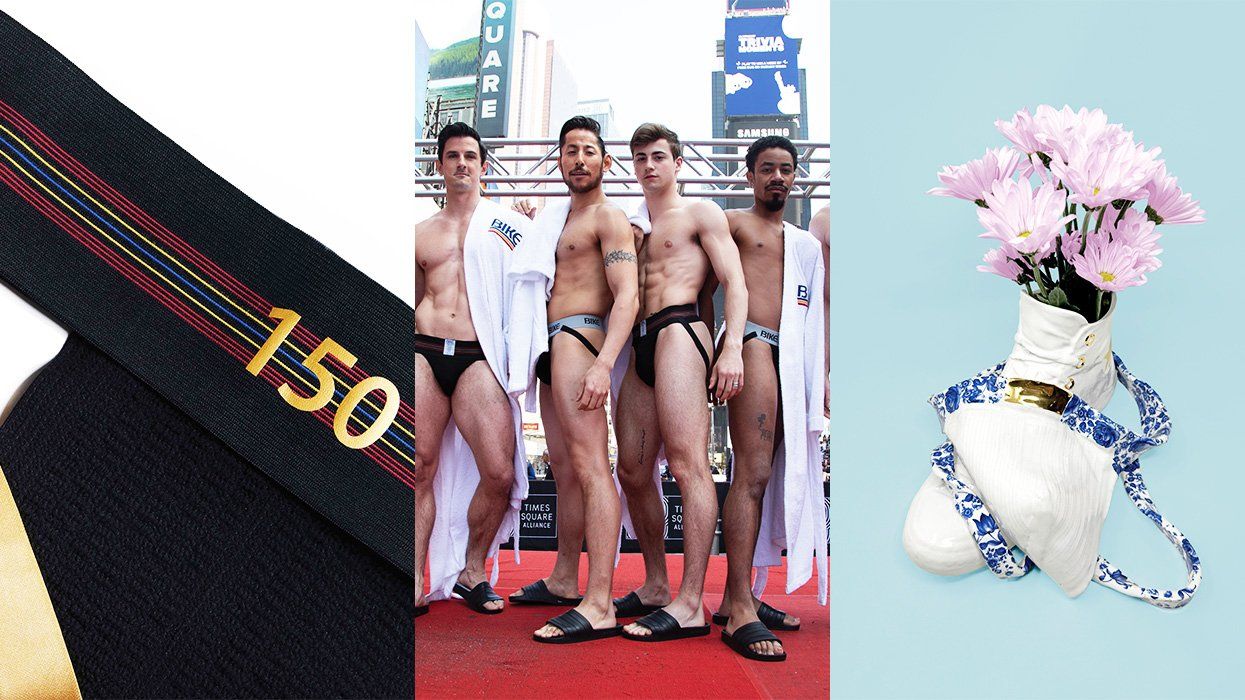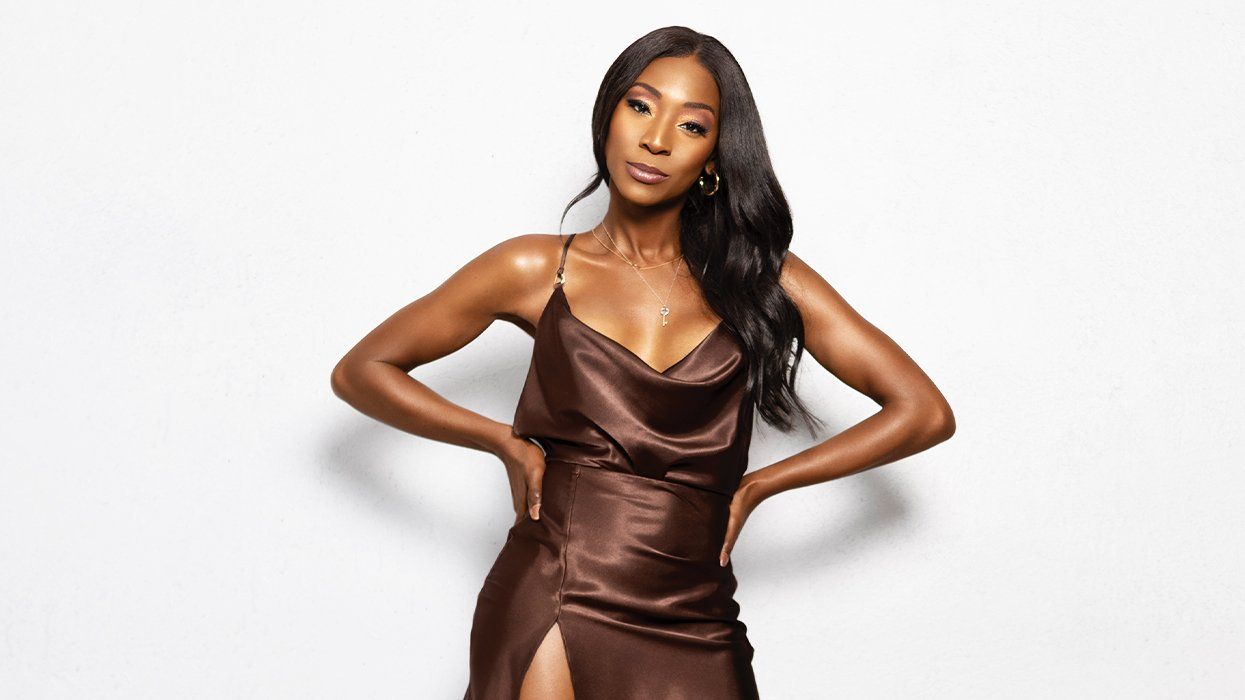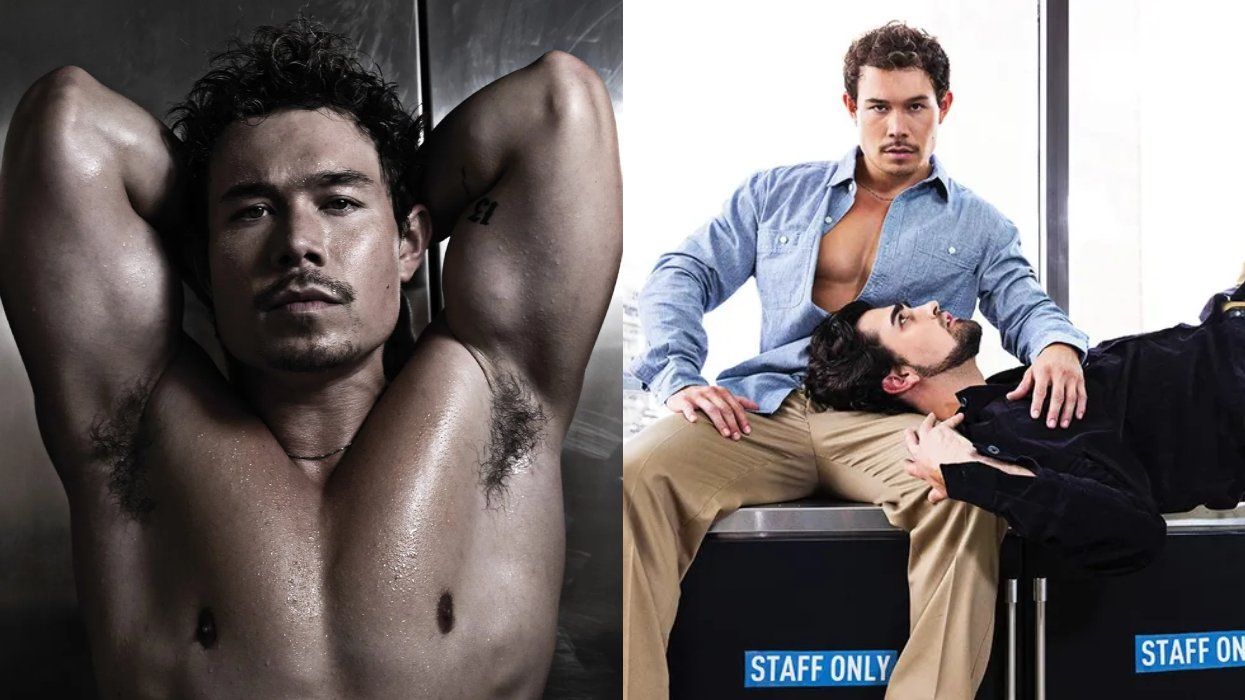Life in quarantine hasn't been terrible for Out100 honoree Andre Leon Talley. The legendary fashion editor, who is hunkered down in his sprawling upstate New York home, is using his free time to catch up on James Baldwin, watch the post-election coverage (only on MSNBC), as well as think about the future of America and the business of fashion.
For the man whose career spans over 40 years in the fashion industry's most elite circles, finding solace in his thoughts and imagination has not only been a means of escape his entire life, but also a way to survive. After all, "you have to love yourself in order to be by yourself," Talley, who this year was under consideration for a Grammy Award for Best Spoken Word for his memoir, The Chiffon Trenches, tells Out.
Growing up in the Jim Crow South required a special kind of armor for a closeted queer Black kid. For Talley, the best armor he could have possibly equipped himself with was knowledge, which began when his dad, who worked in the U.S. patent office by day and drove a taxi at night, gave him an entire set of encyclopedias made of red moroccan leather, which he still has today.
"It's been a journey of pain and joy," Talley says of his life. "But, you know, racism did not impact me because I had the love of my grandmother. My grandmother only gave me unconditional love and that's what gave me the strength to go on and be confident in the way I presented myself to the world."
Though he was an only child living with his grandmother, Talley admits to being spoiled by his parents, especially his father. "My father was very proud of me, but we never had a real close father-son relationship," he says.
Talley escaped into his studies of culture, fashion, and literature, which led him to the pages of Vogue at an early age. It was during this time he was living in several closets: one of which forced him to hide his sexuality from his God-fearing family and another that hid years of sexual abuse from adult men in his neighborhood, which he says happened almost on a weekly basis during his childhood.
"When I realized what was happening to me, and I realized it was a shame that I carried within me, I thought, I can't tell this to my grandmother. I can't tell this to my father and my mother because they'll just curl up and wither and die," he says. "I found my strength in the church. We were a church-going family and so when I got out into the world, the people embraced me. They embraced the knowledge and how I shared that knowledge."
Talley found community at North Carolina Central University before getting a scholarship to study French literature at Brown University. From there, he moved to New York City where he found his tribe.
It was in the Big Apple he first met legendary fashion editor Diana Vreeland while apprenticing at the Metropolitan Museum of Art in 1974. Vreeland would go on to mentor him throughout his career, even getting him his first paid job as a writer at Interview magazine. In fact, her glowing review to editor Bob Colacello was that Talley "knew more about the history of fashion much more than I did."
"She shared her gift, the gift of her genius of how to see and analyze clothes," he says of Vreeland, whose photo is prominently displayed during our video call. "She taught me how to see the narrative in a dress. What is the dress? When was it made? Was she a personality? Who designed the dress? Where did she wear it? There's a story behind the dress as there is a story behind a marvelous author. She taught me how to articulate the beauty of a dress, the garment from inside and out, through the history of costume. And that is a rare feat. It was just the way she was; her being. You mentor people by your very being. Who you are you share to the world, and that will impact people."
Talley would later work at Women's Wear Daily as its Paris bureau chief before choosing to resign after experiencing systemic racism from inside the company. He eventually landed at Vogue in 1983, first as the fashion news director and then later as creative director, the first Black person to have that title in the magazine's history thanks to another mentor of his, Vogue editor in chief Anna Wintour.
"Anna Wintour made me the first Black creative director of American Vogue," he proclaims. "It had never been done. She broke that glass ceiling and that created history. That was in 1988, then you fast-forward three years ago, and Edward Enninful who worked for American Vogue, became the first editor in chief of British Vogue. So there is an evolutionary leap to this. People saw something in me and I always say it was knowledge. As Auntie Mame said [in Mame], 'Knowledge is power.'"
Earlier this year, Talley defended Wintour, using that very point, when a New York Times article criticized her for being complicit in systemic racism: "Anna made history by making me the first African American male EVER to be named as creative director of Vogue, in 1988. She crashed the glass ceiling," he wrote on Instagram.
Still, Talley didn't hold back about his own experience working with Wintour at Vogue in his latest book, telling us that while the book was certainly a vessel to get his truth out in the open (all of which were reviewed by Wintour before it was published), it is in no way an act of revenge. Quite the opposite, in fact.
"When I wrote my book, this was between me and Anna Wintour," he says. "I call my book the epistle. It's an epistle of love. It's a love letter to Anna. I had been hurt. I had to express my feelings. I did not tear her down and this was not a revenge tell-all. This is not a salacious tell-all about Anna Wintour. She saw the galley first. She said, 'It's compelling. You told your story.' And then she said, 'Just take my children out of your book.' And I took the children out."
"I think the Times thought they had a story and they had to go with it," he adds. "But the story was not grounded because there were so many people talking about being in Vogue and these young Black people were afraid to give their names. What I said about Anna, my name is there and I stand by it. I think she is a woman of privilege. She's a white woman, and you know, white people have a past."
"I want to go on record to say Anna Wintour is not a racist," he continues. "There is not a racist bone in her body. She did so much for Black people. She was always putting Black people [ahead]. The most important thing she ever did to me in my career, besides support me financially through my salary and through my titles, she put up with me because I'm a lot to put up with. I'm scarred and I'm flawed. But the most important thing is when she came to me and said, 'Andre, we are going to do a cover of Michelle Obama because she's going to be the next First Lady and you are going to do the interview.' That was the greatest honor. I did the interview and it was published, and I only wish my grandmother had been alive to see it. She could have given that to anyone, but she was smart enough to know, 'You have got to do the Michelle Obama interview.' Now, I was not a political editor. She could have given it to anyone but she gave it to me."
As far as the state of media today, Talley thinks the 24/7 news cycle is "great," but he cautions writers and editors not to let it dictate their editorial judgment or replace their own instincts, which he insists must be founded on research, study, and context.
"The world today demands that everything is over after it's there," he says. "You know, after you have a scoop, five hours later, you've got to have another scoop or you've got to come up with another idea."
He adds, "Great editors are instinctive about what they're doing. Instinctively, great editors like Anna Wintour or Diane Vreeland or Graydon Carter or Tina Brown, all these editors were hired for their instincts and their brilliance. They tapped into the zeitgeist of today and they somehow gave it a zip. And they gave it a freshness. They gave it fresh air and they each gave their own point of view."
As the fashion industry continues to go virtual, Talley is hopeful and optimistic about the future of the business. "You must adapt your creative process and go with your instincts," he says. "I think the digitality of the digital fashion world will be great because there are so many individuals who can bring so much to it. I think the future is in digital, the virtual platform. Fashion is always going to be exciting."
A version of this piece was originally published in this year's Out100 issue, out on newstands 12/1. The issue has four cover stars: Janelle Monae, Wilson Cruz, Joe Mantello, and Janaya Khan. To get your own copy directly, support queer media and subscribe -- or download yours for Amazon, Kindle, Nook, or Apple News +. The first-ever Out100 Symposium, titled "How Do We Come Back From This" was hosted by Janaya Khan. Watch the first-ever Out100 Virtual Honoree Induction Ceremony on the Out100 Live landing page.


